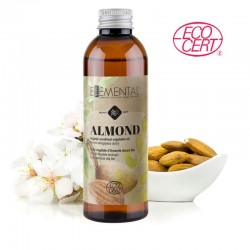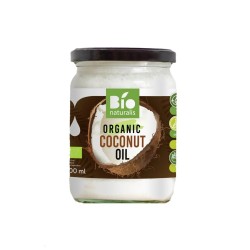Tropical Bocy Butter
Body scrub is one of the simplest cosmetic products to make at home. Here you can find nine recipes that you can customize according to your preferences.
Why use a body scrub?
The task of a body scrub is to remove dead skin cells from the skin's surface, which makes the skin appear uneven and dull. Uncleansed skin appears dry and uneven. As the skin receives less air, clogged pores occur more easily. Removing dead skin cells from the skin's surface stimulates skin renewal and the formation of new cells. Removing dead skin cells, in particular, improves complexion by making the skin smoother, more even, and more radiant. Exfoliation also prepares the skin for a more lasting tan and helps reduce the risk of hair ingrowth after shaving.
Body scrubs remove dead cells from the skin through mechanical abrasion. Depending on the exfoliating substance, the exfoliation can be gentler or more intense. The intensity of the exfoliation is influenced by the properties of the exfoliating substance, its hardness, the size of the grains, and the shape of the exfoliating particles.
In addition to exfoliating particles, body scrubs contain various plant oils and butters. Using them makes the skin softer, evens out wrinkles, and helps the skin retain moisture.
What do homemade body scrubs consist of?
A natural body scrub consists mainly of an exfoliating component and skin-softening oils. Homemade body scrubs can be personalized by adding various essential oils and natural ingredients.
The scrub is a substance that removes dead skin cells from the skin. The three most common exfoliating agents used in body scrubs are sugar, salt, and coffee. Sugar scrubs are the gentlest and are suitable for users with sensitive skin. The finer the sugar, the gentler the scrub. For oily skin, a sugar scrub can be used a few times a week, while for delicate, thin, and sensitive skin, it can be used once every two weeks.
Coffee is usually used in body scrubs with sugar, as its exfoliating ability is modest. However, the caffeine in the coffee powder helps fight cellulite and remove water and waste from the body. A coffee scrub can be made using leftover coffee grounds from brewing, but such a scrub is not suitable for long-term storage and should be used immediately because of its water content, it quickly becomes moldy.
Salt body scrubs are intense and abrasive and are suitable for use on the feet, elbows, and heels to maintain skin calluses. A salt body scrub cannot be used on abrasions or cuts because the broken skin will sting. Salt also has a drying effect on the skin and should not be used more than once a week. Ground pumice stone can also be added to the scrub for intensive foot exfoliation.
Wheat bran is suitable for gentle facial exfoliation, but it is not particularly effective as a body scrub.
Oils and butters help the exfoliator glide on the skin and make the skin softer. Both liquid oils, which give a softer consistency, and soft plant-based butters, such as coconut oil, shea butter, and mango butter can be used in body scrubs. Since a large amount of oil is rinsed off the body after exfoliation, it is better to use lower-priced base oils in body scrubs and reserve more expensive products for face oils and creams. Sweet almond oil is a great choice, but cold-pressed olive oil from the kitchen can also work well.
As an additional ingredient, clays can be added to body scrubs to help cleanse the skin and remove toxins. Mineral-rich clays stimulate blood circulation and nourish the skin with minerals.
Essential oils add aromatherapy benefits to body scrubs. Citrus essential oils such as bergamot, lemon, lime, grapefruit, and orange essential oils have mood-boosting effects. Peppermint essential oil is refreshing and invigorating, making it perfect for foot scrubs. The lavender essential oil has a calming and relaxing effect. If you plan to use a body scrub on your face, use essential oils sparingly, just a few drops per 100 ml of product.
It is best to avoid exfoliation when experiencing sunburn, redness, and skin rashes. Exfoliating further irritates sensitive skin and prolongs the recovery process.
Using a Body Scrub
The body scrub is best used on damp skin, either in the shower or after a sauna session. The scrub glides better on damp skin, and warm water opens the pores, allowing the product to work more effectively. Since the body scrub contains skin-softening oils, it is best to use it after washing. During washing, the initial sebum and dirt are removed, allowing the scrub to penetrate deeper. Apply the body scrub to the skin in circular motions, moving towards the heart. After rubbing, rinse off the remaining scrub with lukewarm water.
After using the body scrub, it is best to use nourishing body butter or body lotion to reduce the drying effect of the scrub on the skin. Freshly exfoliated skin absorbs nutrients better.
Avoid using a body scrub just before going into the sun. Give the skin time to restore its protective barrier.
Body Scrub Recipes
Body scrub recipes are meant to inspire and provide guidance. You can adjust the ratio of sugar to oils according to your preferences, making the scrub more or less oily. The only thing to keep in mind is the amount of essential oil, which should not exceed 1 g per 100 g of scrub. This amount should be further reduced for products used on the face.
Simple sugar body scrub 100 ml
80 g sugar
40 g oil
10-20 drops of essential oil
Use brown or white sugar, depending on your preference for coarseness. Mix the oil and sugar thoroughly in a bowl. Finally, add the essential oil drops and mix well.
Variations on the sugar body scrub
Honey body scrub
Add 1 tbsp of warmed honey to the sugar scrub. Mix well before use.
Here are the English translations of the recipes you provided:
Face scrub with wheat bran
Use fine sugar and replace a portion of it with wheat bran. This way you can create a gentle face scrub.
Chocolate-orange body scrub
Add 1 tablespoon of cocoa powder to the body scrub. Use orange essential oil for fragrance. Cocoa powder is rich in antioxidants which helps to fight against oxidative stress.
Coffee body scrub
Mix 50g of sugar, 50g of ground coffee, and 50g of oil together.
Tropical body scrub (100 ml)

Tropical body scrub got its name from its tropical ingredients and exotic fragrances. Compared to the base recipe of sugar scrub, the proportion of fats is higher in this scrub. It is less intense and more moisturizing for the skin.
Ingredients:
- 25g coconut oil
- 25g shea butter or mango butter
- 10g sweet almond oil
- 20 drops of various citrus essential oils (sweet orange, grapefruit, lemon, lime)
- 60g (brown) sugar
Preparation:
To prepare the body scrub, soften the fats in a glass bowl over a water bath, but do not melt them completely (if the room is very warm, heating is not necessary). Then add sweet almond oil and mix to a uniform and airy mass. Stir in the essential oils and mix well. Finally, add the sugar in portions and mix to a uniform consistency. Spoon into a jar.
TIP! If you want to make whipped body scrub, beat coconut oil, shea butter, or mango butter into a froth with a mixer before mixing with sugar. To maintain the foaminess of the body scrub during use, it must be kept in the refrigerator.
Salt foot scrub
I like salt foot scrub the most, because in my opinion, it is the most effective and produces visible results immediately.
Ingredients:
- 150g salt
- 75g oil
- 1 tablespoon of ground pumice stone
- 20 drops of peppermint essential oil
As salt grains vary greatly in size, the composition and exfoliating strength of the body scrub may vary. Adjust the amount of oil if necessary. It is not advisable to use very fine table salt here. Even in small grocery stores today, pink Himalayan salt is available, which gives the scrub a natural pink color.
The result is most effective when using foot scrub if you soak your feet in warm water for 10-15 minutes before scrubbing, then moisturize them.
Coffee sugar cubes that soften the skin

Ingredients:
- 20g cocoa butter
- 10g vegetable oil
- 15g coffee powder
- 45g sugar
- Up to 10 drops of essential oil
Melt the cocoa butter and oil over a water bath. First mix in the coffee powder, then the sugar. Finally, add the fragrance. Wait until the mixture begins to thicken slightly, then pour it into portion molds to solidify. When pouring the mixture into the mold, ensure it is not too hot, as the sugar and coffee will sink to the bottom, and the oil will rise to the surface. Store the sugar cubes in an airtight container in a cool place. In warm temperatures, the cocoa butter may begin to melt, and the cubes may break apart.
Exfoliating soap cubes (wash-scrub-moisturize)

These soap cubes are made in portion sizes.
100 g sugar, 25 g shea butter, 50 g soap base, up to 20 drops of essential oil
Cut the soap base into smaller cubes. Melt the soap base in a double boiler or in the microwave. Mix in the shea butter and let it melt. Add the sugar and essential oil. Pour into molds and let it harden. Store the soap cubes in a closed jar in a cool place away from direct sunlight.
Using and storing body scrub
Store the body scrub in a cool place. Body scrubs that contain coconut oil, shea butter, or mango butter can become softer at room temperature and may lose their texture.
These recipes do not contain preservatives. Therefore, it is important not to let any water into the jar when using it. This can cause mold to grow. It is better to take out the necessary amount and put it in a separate dish before using.
Body scrubs that contain oils, sugar, salt, and essential oils can last for about 6 months. If different foods such as bran, honey, dried herbs, etc. are added to the body scrub, the shelf life will be shorter. They should be stored in the refrigerator and consumed within a few weeks.
Since making body scrub is simple and quick, you can always mix a small amount for immediate use. This way, you can try different oils and exfoliating agents and choose a scent according to your mood.


























Leave a comment
Comments
Troopiline kehakoorija
By: Birgit On 11/13/2019Tere,
Palju sellest kogusest kehakoorijat saab ja kaua võiks säilida ?
Tervitades,
Birgit
Replied by: Helen Idarand On 11/13/2019